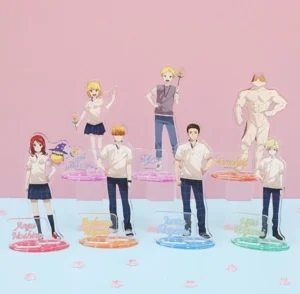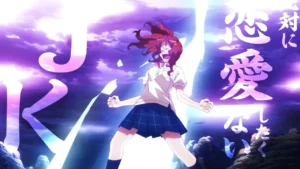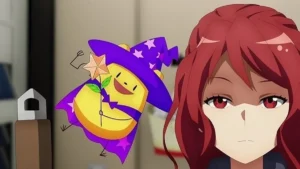Introduction
Welcome to the ultimate glossary of anime and manga terms! Whether you’re a seasoned otaku or a newcomer to the fascinating world of Japanese animation and comics, this glossary aims to be your go-to guide. Understanding these terms will not only deepen your appreciation for the genre but also make you sound like a pro when discussing your favorite series. Let’s dive in!

Basic Terms
Anime
Anime is the Japanese word for animation. It refers to animated TV shows, movies, and web series originating from Japan. Unlike Western animation, anime often tackles a wide range of genres and themes, appealing to various age groups.
Manga
Manga are Japanese comics read from right to left. They serve as the source material for many anime series and come in various genres, catering to different age groups and tastes.
Otaku
An otaku is someone who is extremely passionate about anime and manga. The term can also extend to people who are obsessed with other aspects of Japanese culture.
Light Novel
Light novels are traditional books that contain text and illustrations. They often serve as the basis for anime adaptations.
Doujinshi
These are fan-made manga or comics, often created to pay homage to popular anime or manga series.
Genre-Specific Terms
Shounen
Shounen is a genre targeted at young male audiences. It often features action-packed storylines and male protagonists.
Shoujo
Shoujo is geared towards young female audiences and often focuses on romance and emotional experiences.
Seinen
Seinen is a genre aimed at adult males, featuring darker and more mature themes.
Josei
Josei is the equivalent genre for adult women, often featuring realistic portrayals of life and relationships.
Isekai
Isekai refers to a sub-genre where the protagonist is transported to another, often fantastical, world.
Harem
In a harem anime or manga, the main character is surrounded by multiple love interests, usually of the opposite sex.
Mecha
Mecha anime and manga feature giant robots, often piloted by humans, engaged in battles.
Character Archetypes
Tsundere
Tsundere characters start off as cold or hostile towards others but gradually show a warmer side.
Kawaii
Kawaii means “cute” in Japanese. In anime and manga, “kawaii” characters are designed to be adorable and endearing.
Senpai
Senpai refers to someone who is older or more experienced. It’s a term of respect and is often used in school settings.
Waifu/Husbando
Waifu refers to a fictional female character an otaku is emotionally attached to. Husbando is the male equivalent.
Controversial Terms
Ecchi/Hentai
Ecchi anime and manga have sexual undertones but are not explicit, whereas Hentai is adult-oriented and explicit.
Yaoi/Yuri
Yaoi and Yuri refer to genres that focus on homosexual relationships between men and women, respectively.
Conclusion
Understanding the terms in this glossary can significantly enhance your anime and manga experience. Whether you’re discussing the latest shounen hit or debating the merits of a seinen series, knowing these terms will make you a more informed fan. Happy watching and reading!




